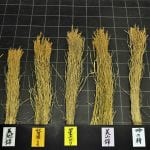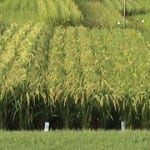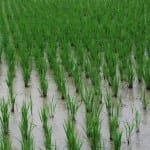 Way back in April of this year I was in London as a judge for the International Wine Challenge’s Sake Competition. On the morning of the third straight day of tasting sake, it was down to a few sake and a few judges. We were assessing whether or not the sake that had made the cut thus far were worthy of a gold, silver or bronze medal, or whether they were to be relegated back to the quagmire of mediocrity.
Way back in April of this year I was in London as a judge for the International Wine Challenge’s Sake Competition. On the morning of the third straight day of tasting sake, it was down to a few sake and a few judges. We were assessing whether or not the sake that had made the cut thus far were worthy of a gold, silver or bronze medal, or whether they were to be relegated back to the quagmire of mediocrity.
Our tasting panel of four included Mr. Satoshi Kimijima, a prominent and passionate retailer and more from Yokohama. He is outspoken to say the least, but he has the experience, knowledge, and tasting prowess to back that up. He tastes pretty much constantly and travels around Japan doing so more than anyone I know. And he plays in a rock and roll band when not tasting. In fact, sometimes I worry about him; but I digress.
The four of us were assessing a sake, and we did not come to an immediate agreement. At least one was concerned that it was too light, with not enough presence or umami, to justify a shiny medal.
Kimijima-san, who was for giving the medal, shook his head tersely and said, “douse wase da kara.” The best translation of this would be, “It is, after all, an early-harvest rice.”
He did not go any further. And as soon as he said that, it all became clear to me. Of course! It should get that medal.
At this point, he deemed it necessary to clarify the reference. So he continued. “Because this sake was obviously made with an early- harvest rice, not a late-harvest rice, we should not expect much more out of it. This is about as rich or deep a profile as we can expect, and because it was a deliberate choice on the part of the brewer, we should acknowledge that and give it a medal.”
harvest rice, not a late-harvest rice, we should not expect much more out of it. This is about as rich or deep a profile as we can expect, and because it was a deliberate choice on the part of the brewer, we should acknowledge that and give it a medal.”
First of all, bear in mind this was a blind tasting. None of us knew what the sake before us was. Yet this guy was able to blindly taste the sake and tell us just when the bloody rice was harvested? Can he really do that?
Yes. He can. Like I said, he has tons of experience. How could he know? Well, he couldn’t have, not for sure anyway. But by tasting it and noting the lightness, subdued umami, resonance and depth, he intuitively knew. It could have been a chapter in the book “Blink” by Malcolm Gladwell.
Showering heaps of adulation on Kimijima-san is not really the point here. Rice varieties and their effect on sake is the point.
There are literally hundreds of varieties of rice used in sake brewing. Some are proper sake rice, others are not. Each one is ready for harvest at a different time. Some are harvested as early as August, others not until November. While it is not a clear delineation, early harvest varieties are referred to as wase (pronounced wa-seh) and late harvest types are called okute (oku-teh). This nomenclature applies to both sake rice and table rice, by the way.
 Most, but not all, sake rice tends to be okute; this includes Yamada Nishiki, Omachi and a few more well-known types. Gohyakumangoku is a typical example of a sake rice that is wase. And there are of course many rice varieties that are neither early nor late harvest, but rather somewhere in the middle.
Most, but not all, sake rice tends to be okute; this includes Yamada Nishiki, Omachi and a few more well-known types. Gohyakumangoku is a typical example of a sake rice that is wase. And there are of course many rice varieties that are neither early nor late harvest, but rather somewhere in the middle.
More relevantly, early harvest rice tends to lead to lighter flavors, and late-harvest rice yields sake with much more umami, breadth, flavor, and resonance. This is not to say that okute rice types are always and unequivocally better than wase types. Perish the thought! Nothing is ever that simple in the sake world.
Rice is a challenging topic. It is the main ingredient of sake, but the connection between rice and sake flavors is not nearly as tight as that between grapes and wine. Still, great rice leads to great sake. Some say the better the rice, the more the toji (brewmaster) can get it to behave during the brewing process and create the aimed-for flavor profile. While different varieties of rice, including wase and okute amongst those, can lead to identifiable flavor profiles and styles, a dozen different brewers can take the same rice, milled to the same degree, and make a dozen completely different styles of sake. Go figure.
But there are generalizations with which we can work. Yamada Nishiki (which is okute) tends to lead to billowing, broad, resonant, umami laden sake. Omachi (which is also okute) tends to give rise to higher sweetness and acidity, and a decidedly herbal touch. Gohyakumangoku (which is wase) often yields light, airy, delicate flavor profiles. Remember that one is not better than the other. It is simply a choice on the part of the brewer. And we are free to have our preferences, but any sake can be more enjoyable if we taste it knowing it was the result of a chain of conscious decisions by the brewer.
The name of the sake rice used in a given brew is often written on the bottle, but not always. However, no sake label includes information regarding wase or okute. So it may take a while to learn to discern them, but the learning curve is a fun one.




